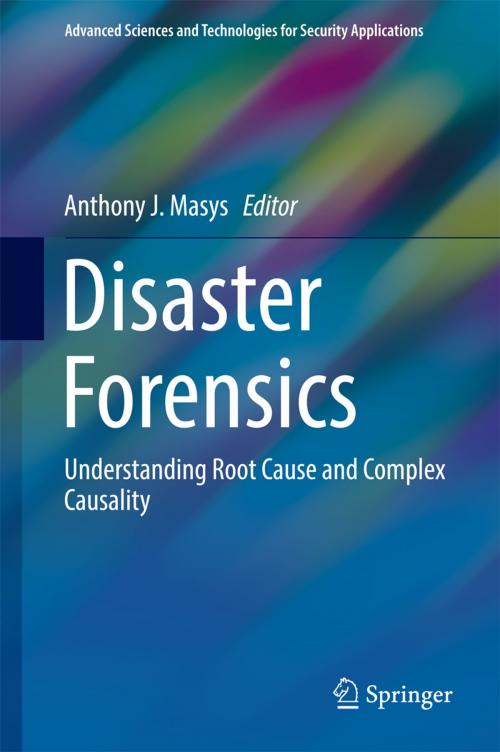Disaster Forensics
Understanding Root Cause and Complex Causality
Nonfiction, Science & Nature, Nature, Environment, Natural Disasters, Technology, Engineering| Author: | ISBN: | 9783319418490 | |
| Publisher: | Springer International Publishing | Publication: | September 3, 2016 |
| Imprint: | Springer | Language: | English |
| Author: | |
| ISBN: | 9783319418490 |
| Publisher: | Springer International Publishing |
| Publication: | September 3, 2016 |
| Imprint: | Springer |
| Language: | English |
This book aims to uncover the root causes of natural and man-made disasters by going beyond the typical reports and case studies conducted post-disaster. It opens the black box of disasters by presenting ‘forensic analysis approaches’ to disasters, thereby revealing the complex causality that characterizes them and explaining how and why hazards do, or do not, become disasters. This yields ‘systemic’ strategies for managing disasters.
Recently the global threat landscape has seen the emergence of high impact, low probability events. Events like Hurricane Katrina, the Great Japan Earthquake and tsunami, Hurricane Sandy, Super Typhoon Haiyan, global terrorist activities have become the new norm. Extreme events challenge our understanding regarding the interdependencies and complexity of the disaster aetiology and are often referred to as Black Swans. Between 2002 and 2011, there were 4130 disasters recorded that resulted from natural hazards around the world. In these, 1,117,527 people perished and a minimum of US$1,195 billion in losses were reported. In the year 2011 alone, 302 disasters claimed 29,782 lives; affected 206 million people and inflicted damages worth a minimum of estimated US$366 billion.
This book aims to uncover the root causes of natural and man-made disasters by going beyond the typical reports and case studies conducted post-disaster. It opens the black box of disasters by presenting ‘forensic analysis approaches’ to disasters, thereby revealing the complex causality that characterizes them and explaining how and why hazards do, or do not, become disasters. This yields ‘systemic’ strategies for managing disasters.
Recently the global threat landscape has seen the emergence of high impact, low probability events. Events like Hurricane Katrina, the Great Japan Earthquake and tsunami, Hurricane Sandy, Super Typhoon Haiyan, global terrorist activities have become the new norm. Extreme events challenge our understanding regarding the interdependencies and complexity of the disaster aetiology and are often referred to as Black Swans. Between 2002 and 2011, there were 4130 disasters recorded that resulted from natural hazards around the world. In these, 1,117,527 people perished and a minimum of US$1,195 billion in losses were reported. In the year 2011 alone, 302 disasters claimed 29,782 lives; affected 206 million people and inflicted damages worth a minimum of estimated US$366 billion.















